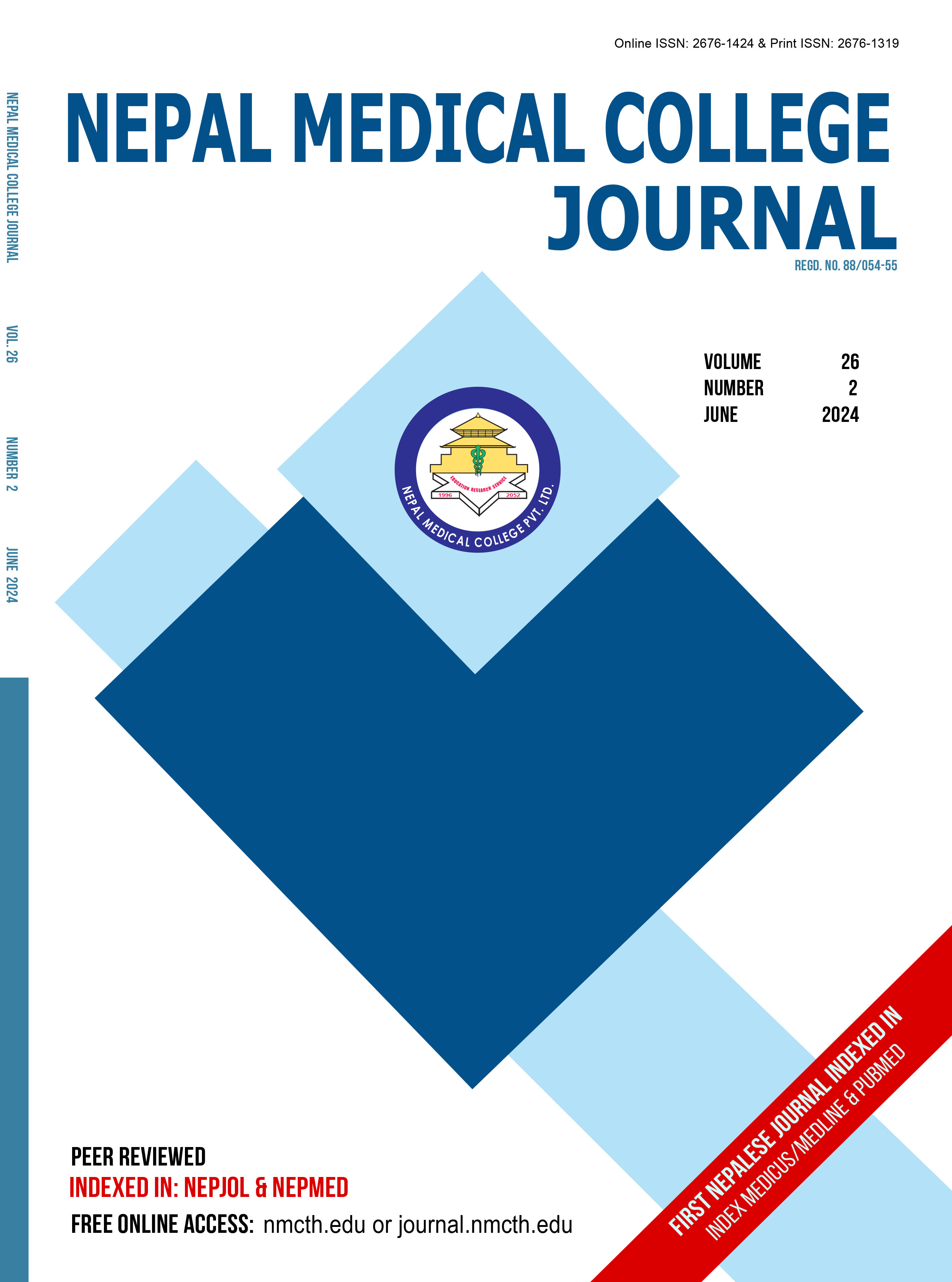The Safety and Feasibility of Segmental Thoracic Spinal Anesthesia above Umbilicus and Breast Surgery
DOI:
https://doi.org/10.3126/nmcj.v26i2.67196Keywords:
Thoracic spinal anesthesia, lap surgery, ASA, VAS, complicationsAbstract
This study was conducted on 30 patients aged 16 to 70 years with American Society of Anesthesiology (ASA) physical status I, II, and III. Though general anesthesia (GA) is a universally accepted technique for most abdominal surgeries but not free from drawbacks including poly medicine side effects, prolonged recovery time, and unnoticed inadequate pain control, as well as risk to elderly patients with cardiopulmonary conditions, and safety issue limits the usefulness of general anesthesia. Thus, the new technique adopted attracts the attention of anesthesiologists, as thoracic segmental spinal anesthesia (TSSA) for several common surgeries where local anesthetic agents injected intrathecally above the termination of the spinal cord show value in patients with high risk for general anesthesia who need deep analgesia. The types of surgery were periumbilical hernia 7 (23.33%) in both age groups followed by epigastric hernia 8 (26.66%), neoplastic diseases of breast 6 (20%), laparoscopy cholecystectomy 4 (13.33%), open cholecystectomy 5 (16.66%). The analysis of intraoperative and postoperative mean systolic and diastolic arterial pressures (MAP) of patients up to 24 hours was found insignificant (P>0.05). Regarding the intraoperative hemodynamic changes, hypotension occurred in 3 patients and resolved with a single bolus of ephedrine, no tachycardia occurred, while bradycardia in 3 patients (15%). No patients need to be converted to general anesthesia due to inadequate block. On analysis complications, peri-operative or post-operative period showed that shoulder pain was experienced by 2 patients (6.66%) in the younger age group whereas in the older age group, two patients (6.66%) have hypotension and bradycardia was seen in 3 patients (13.33%). No respiratory complications, such as postoperative pneumonia or atelectasis were noted during the hospital stay with TSSA as well and no nausea/vomiting was noted. This study provides only preliminary evidence to support the feasibility and efficacy of segmental thoracic spinal anesthesia to be used effectively for safe anesthetic technique during routine laparoscopic surgery in normal patients as well as co-morbidity patients with stable intraoperative and post-operative hemodynamic and also avoidance of complications of general anesthesia with these benefits, decrease in length of stay in hospital, reduction of postoperative pain, and increased patients satisfaction. Thus, in future the segmental spinal anesthesia may become a good alternative to general anesthesia in normal patients as well as comorbid patients.
Downloads
Downloads
Published
How to Cite
Issue
Section
License
Copyright (c) 2024 Nepal Medical College Journal

This work is licensed under a Creative Commons Attribution 4.0 International License.
This license enables reusers to distribute, remix, adapt, and build upon the material in any medium or format, so long as attribution is given to the creator. The license allows for commercial use.




